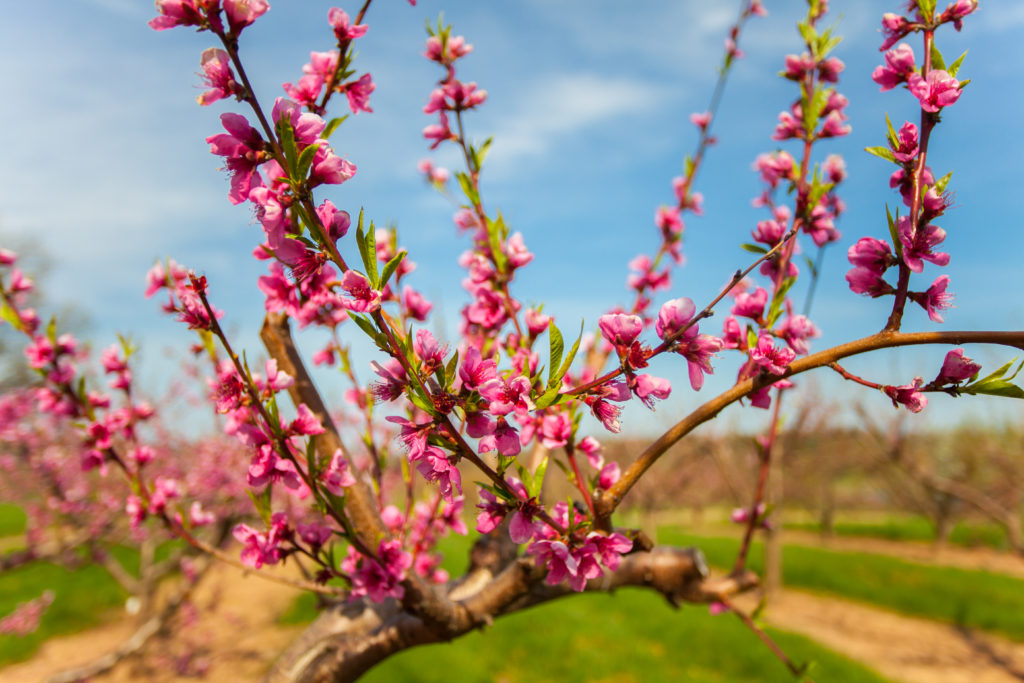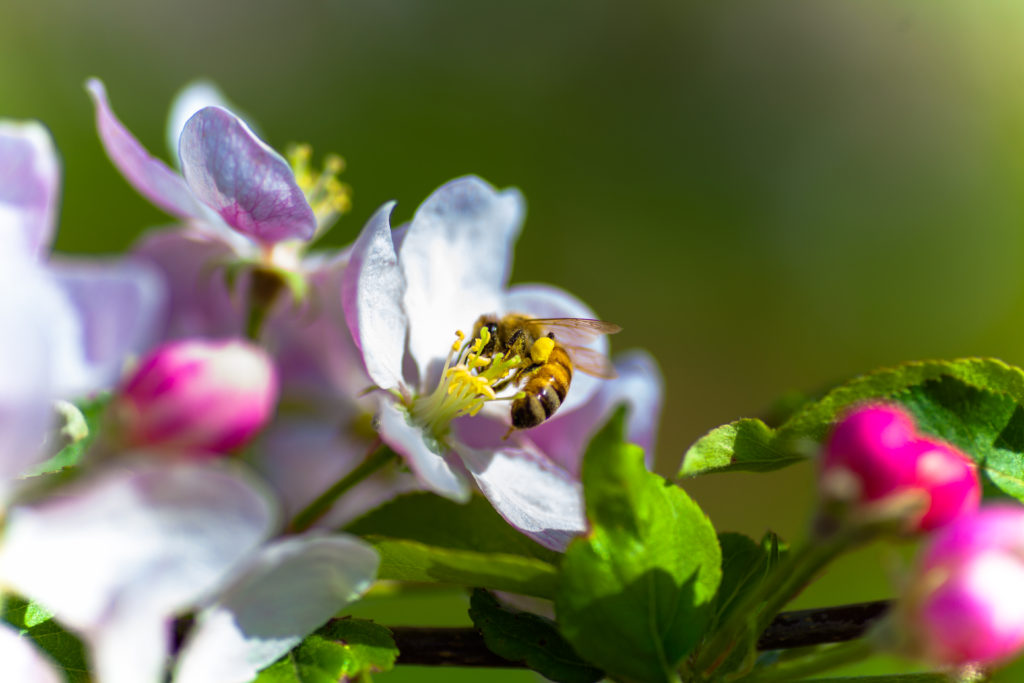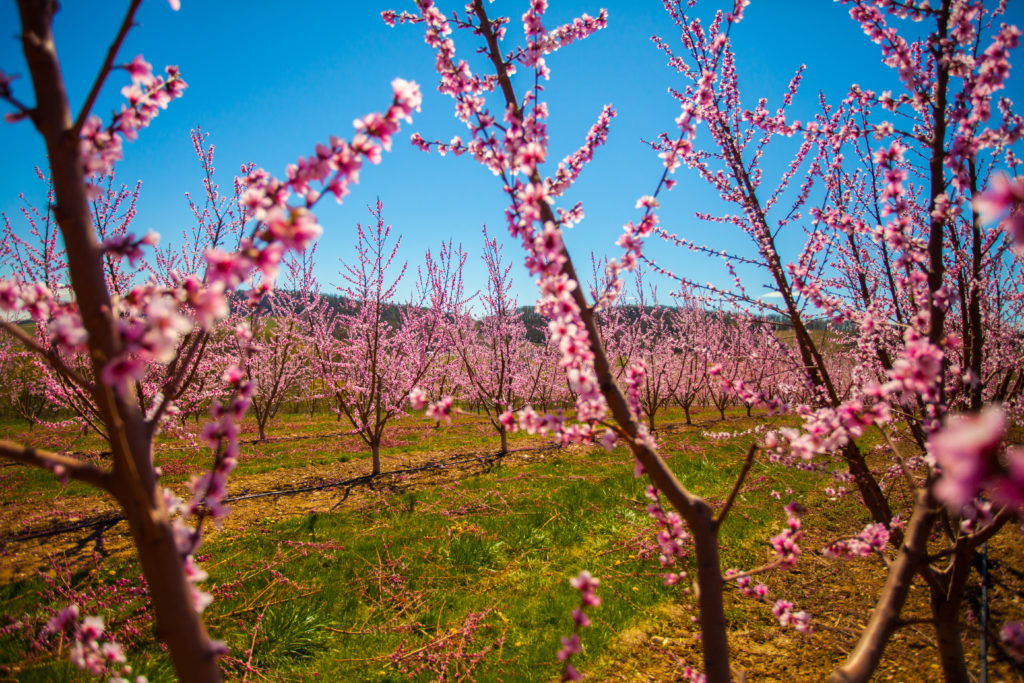What’s Bloomin’?
What’s Bloomin’?
A few weeks ago, we had our annual ‘bloom.’ This is a particularly exciting time of year for us! It means that spring is here, a new crop of fruit is on the horizon and we begin the planning phases of our upcoming season. A strong bloom (lots of flower blossoms) with adequate pollination is vital to setting a successful fruit stage. In this informational post, we will be sharing some FAQs about our local apple and peach bloom in Adams County, PA.
How does pollination actually work?
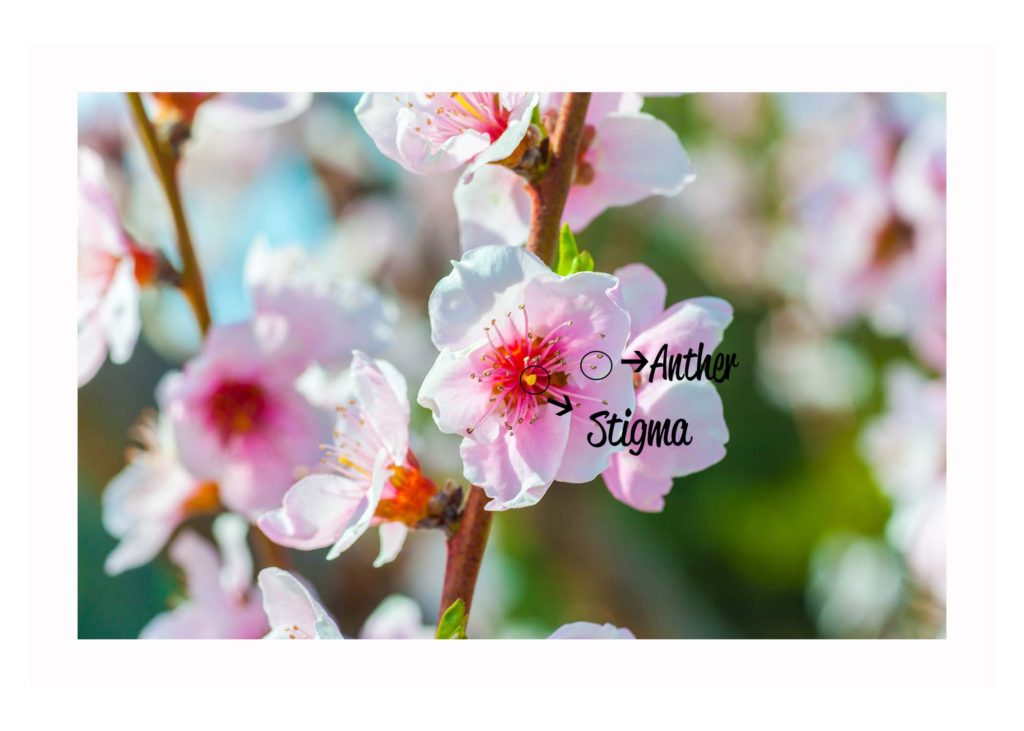 The vital work that bees perform in pollination is to remove pollen from the anther and transfer it to the stigma, either in the same flower/tree (self-pollinating) or in another flower variety (cross-pollination). Most apple varieties are not self-pollinating, which is why you will see rows of trees that all look similar with a sprinkling of trees that have pink flowers, or are notably a different variety. These specific trees are known as “pollinators.” Farmers generally choose a crab-apple variety for a pollination partner to have more solid blocks of the same variety. Once the pollen is successfully transferred, this is called “pollination.” If a blossom has been successfully pollinated, it will become a piece of fruit.
The vital work that bees perform in pollination is to remove pollen from the anther and transfer it to the stigma, either in the same flower/tree (self-pollinating) or in another flower variety (cross-pollination). Most apple varieties are not self-pollinating, which is why you will see rows of trees that all look similar with a sprinkling of trees that have pink flowers, or are notably a different variety. These specific trees are known as “pollinators.” Farmers generally choose a crab-apple variety for a pollination partner to have more solid blocks of the same variety. Once the pollen is successfully transferred, this is called “pollination.” If a blossom has been successfully pollinated, it will become a piece of fruit.
What is the most important part of bloom?
Several elements fit together like a puzzle every year during bloom time. The first element is the weather. Warm, calm weather is ideal- at least for a few days! Bees like to come out and do their best work when the wind is calm and the sun is shining.
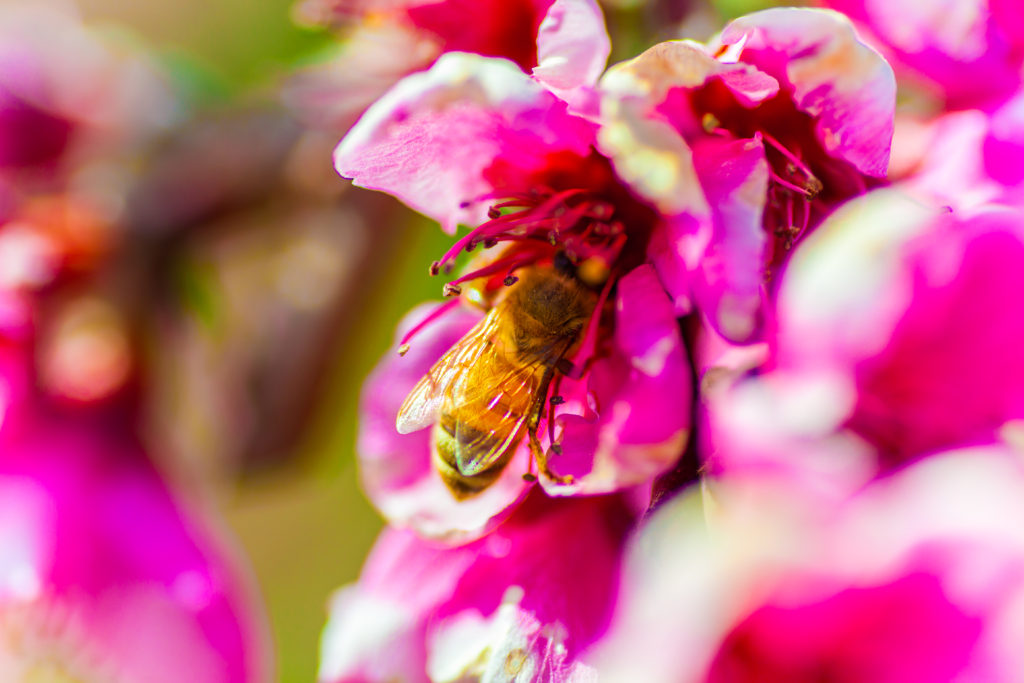
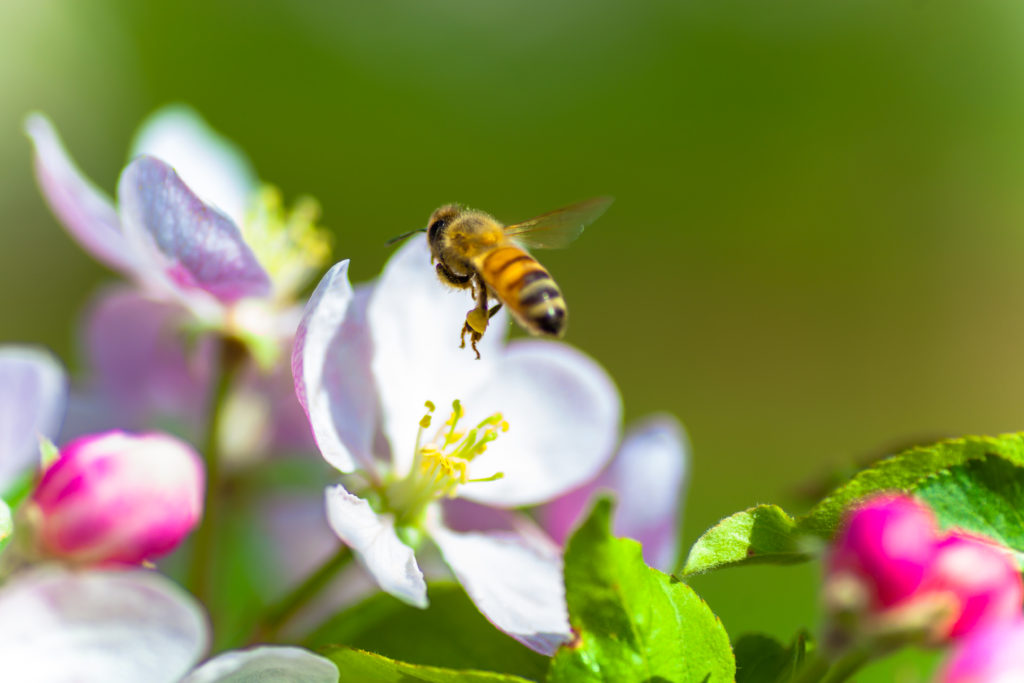
Where do the bees come from?
Sometimes growers rely on nature, letting the bees work their magic naturally. Some have their own in-house hives. Since the pollination window is so short, many will actually rent hives to ensure activity within their respective orchards. Many of these hives have spent the winter in Florida, “working,” the local citrus crops. After apple pollination is over, some even make their way to Maine for blueberry season!
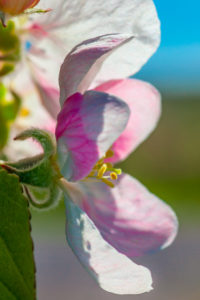
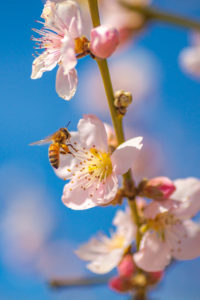
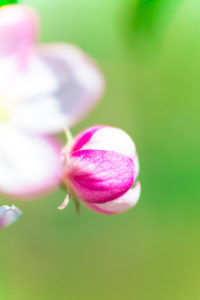
How long do bees pollinate fruit trees?
Bees will pollinate apples as long as there is viable pollen in the blossoms. Sometimes this is a 2-3 day window, but if the weather is more temperate or cool, the bloom time period can develop over a week or longer.
What are the biggest concerns for growers during this time of year?
The biggest issue that growers are concerned about during bloom is temperature. Once the pistil of the bloom is killed, there can be no fruit on that blossom. An extreme temperature, either way, will put a delicate flower blossom in jeopardy.
How long does it take to have a piece of fruit from the time a blossom is pollinated?
Once blossoms are pollinated, the petals of the flowers begin to fall and the fruit begins to “set.” This is about 10 days out from bloom. Depending on the variety, it can take between 100-200 days for apples to be ready for harvest. Apple bloom typically happens in April- May and the first apple varieties, like Gala, will be ready at the beginning of August. Later season varieties, like Granny Smith or Pink Lady, will be ready in late October, early November.
